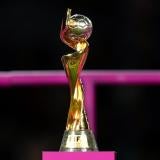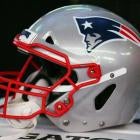PARIS -- As the 2019 FIFA Women's World Cup approaches, Nike this week unveiled home and away kits for 14 national squads at the historic Palais Brongniart in downtown Paris as part of the Women's Experience 2019. The global event also served to highlight other areas of commitment and innovation in women's athletics.
The event continued Nike's recent initiative that has seen the brand push hard toward empowering female athletes. Last month, the company debuted a powerful ad campaign titled "Dream Crazier" that highlighted a number of female athletes who have broken barriers and blazed a path for future generations.
Over the course of two days, guests had the chance to meet with Nike athletes, designers and executives in various locations around Paris as they promoted some of the company's newer offerings, most of them specifically relating to female consumers.
Here are some major takeaways from the experience.
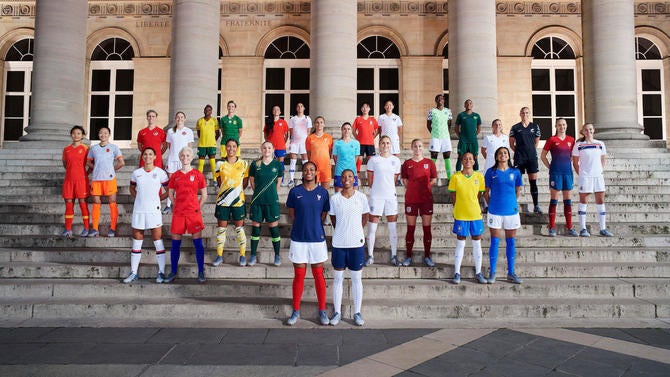
1. Jerseys that belong to the women
For the first time ever, Nike designed and created all of their Women's World Cup kits specifically for the players that will be wearing them. For the 14 World Cup teams that the brand outfits, this means that their jerseys have specific design elements that cater to women's bodies, many of them coming at the request of the athletes themselves.
At the event, Cassie Looker, Nike women's football apparel lead, said that the uniforms were built based on years of research, including four-dimensional body mapping sessions that helped identify the differences in how the bodies of men's and women's athletes function and thrive.
Looker said that while the men prefer slimmer, tighter-fitting uniforms that "make them feel more powerful, like superheroes," the women preferred looser uniforms that delivered more comfort and less restriction. The necklines were designed so that they could accommodate ponytails. The research also helped identify typical hot zones that are more prone to perspiration in female athletes, allowing Nike to design more breathable uniforms with ventilation specifically for women.
Many of the uniforms also brought new aesthetic elements exclusive to the women's teams.
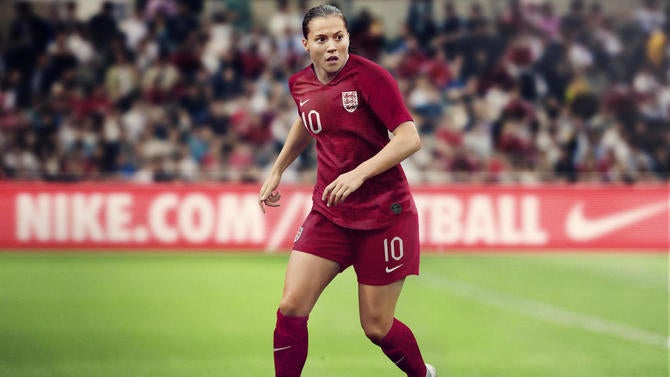
The past handful of years have been huge in regards to the fight for gender equality in sports. Women athletes everywhere have been making an increasingly strong push for equitable support and attention, and results are coming. In this case, treating men and women the same means treating them differently.
In the past, most of the World Cup uniforms from Nike have been highly derivative or alternate versions of the kits designed for men. The men's kits get rolled out for their World Cup, then the women have to piggyback off those kits a year later. This year, most of these jerseys feel like they actually belong to the women.
These uniforms and the changes they bring -- some of them so subtle that they're barely noticeable to the naked eye -- may not seem like a major deal to a casual onlooker, but they're a big deal to the women who will be wearing them this summer. And this step forward from Nike is a big deal for the athletes-in-training that will be wearing future iterations.
2. More than just jerseys, more than just soccer
This was most definitely not your average uniform unveil. There was plenty of significance behind the uniforms and the impact that they'll bring (highlighted above) but also, and maybe more importantly, there's a large significance in just how they were put on display.
In fact, the soccer uniforms themselves seemed to take a backseat to some other elements of the showcase.
For starters, it's not every day that one of these unveils is hosted at a historic venue located in one of the world's most beautiful cities. It was never going to be a standard showcase at Palais Brongniart, but it was a more extravagant and intimate scene than I (and presumably most other attendees) anticipated.
Either about to see Nike unveil Women's World Cup jerseys or be held hostage by a comic book villain. Will update pic.twitter.com/jUytAQHvtC
— Pete Blackburn (@PeteBlackburn) March 11, 2019
It's also not every day that one of these unveils brings out the amount of star power that was on-hand for the show in Paris. The scene became a lot more stunning when Nike had more than 25 of its top women's soccer representatives model the uniforms themselves, strutting out to an elaborate center stage under an elaborate light show.
But the soccer players weren't the only women to take the stage during the presentation. Each of those soccer players was accompanied by a young girl, which served as a nod to Nike's grassroots campaign. A number of other major Nike women's pros -- including Olympic gymnast Simone Biles, WNBA star Sue Bird and former USWNT star Brandi Chastain -- also took their place under the bright lights as they modeled various apparel for the event.
Nike 2019 National Team Kit Unveil pic.twitter.com/GDuPUzovCp
— Nike (@Nike) March 11, 2019
The setting, scenery and showmanship came together to help capture the spirit of Paris, one of the world's most iconic fashion cities. Fashion culture was on display at every turn, and even the crowd in attendance helped contribute to the vibe, with many of them attending in bold, vibrant outfits as they snapped pictures on a makeshift "red carpet" outside the venue and, later, on the central stage inside.
But even with the soccer kits serving as the headliner for the hybrid sports-fashion show, it seemed clear that the event had a larger purpose. It was about the unification and empowerment of female athletes of the past, present and future. It was about the company's commitment to the athletes that represent their brand and the growth of women's sports.
It was clear that Nike invested a lot of resources to make this event happen and, to their credit, they invested those resources and executed the vision well enough to make sure that the message was delivered in pretty emphatic fashion. They allowed these women to share the spotlight together as they received a level of shine that historically hasn't been given to female athletes in this situation. Hell, walking a runway at a famous venue in Paris doesn't seem to be a level of shine that's often given to men in this situation, either.
It seemed like pretty uncharted territory as far as jersey unveils go, so that was pretty special.
3. The importance of sports bras
Beyond the jerseys and the actual process of rolling them out, there were a number of other presentations delivered by leaders on Nike's design team. These in-depth presentations aimed at highlighting the initiatives and innovations surrounding some of the company's new apparel; The most notable one with regards to the World Cup came with the reveal that each of the uniforms will be made using at least 12 recycled plastic bottles. That stays in line with the sustainability efforts that Nike says has helped them divert more than six billion plastic bottles from landfills over the past decade, which is a rather insane number.
But personally, the most eye-opening presentation surrounded sports bras. Yes, sports bras.
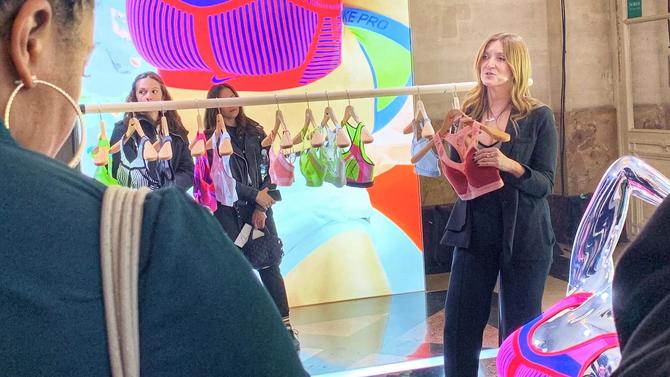
From a male perspective, I hadn't ever thought too deeply about sports bras and how their availability (or lack thereof) can impact a young female athlete and the trajectory of her career. But apparently it's not uncommon for many young girls to lose interest in playing sports if they don't have access to a proper sports bra that fits and provides them the support they require.
It makes a lot of sense considering the bodily changes that young women go through and how much of a challenge that could present for a young athlete as they navigate that portion of their life. It's a bummer to think about how many young girls with potential were derailed or discouraged from pursuing a career in athletics due to lack of access to simple equipment like sports bras.
Nike's presentation touched on that issue and outlined some of their efforts to combat the issue, including a wide array of performance bras aimed at providing support to women of various shapes and sizes. As part of their grassroots campaign, they'll also be piloting a program that helps provide sports bras and other apparel to girls in need through schools and community organizations worldwide.
While a sports bra presentation was certainly not something I thought would be a highlight of the week, it served to provide valuable insight and perspective on an issue that I wasn't really aware existed. Also, it seemed rather fitting that Nike held a big sports bra conference at an event surrounding the 20th anniversary of the 1999 Women's World Cup, especially with Chastain in attendance.
4. U.S. players continue to push for equal footing

While the event in Paris was a special, empowering showcase of Nike's female athletes, it certainly wasn't a solution to all of their problems or an end to their fight for equitable support. In fact, in the days surrounding the event, the United States women's national team made headlines as they sued the U.S. Soccer federation for gender discrimination.
All 28 members of the USWNT -- including Megan Rapinoe and Alex Morgan, who were in Paris for the Nike event -- filed a lawsuit under the Equal Pay Act and Title VII of the Civil Rights Act. That lawsuit focuses on the unequal pay that the women receive in comparison to the men's national team despite having the same responsibilities.
The USWNT received raises in base pay, bonuses and better travel accommodations when they last negotiated their collective bargaining agreement in 2017, but the group is serious about continuing to seek equal compensation in relation to the men's team.
"Each of us is extremely proud to wear the United States jersey, and we also take seriously the responsibility that comes with that," Alex Morgan said in a statement after the lawsuit was filed. "We believe that fighting for gender equality in sports is a part of that responsibility. As players, we deserved to be paid equally for our work, regardless of our gender."
As it stands, if both the U.S. men's and women's teams were to win 20 non-tournament matches apiece, the men would earn an average of $263,320 – which comes out to more than $13,000 per game -- while the women would earn a maximum of $99,000, equaling a little less than $5,000 per game.
The USSF claims that the men are paid more because they "bring in more revenue and TV ratings," but it's worth pointing out that their own reports says that the women's team generated $20 million more than the men's team after winning the World Cup in 2015.
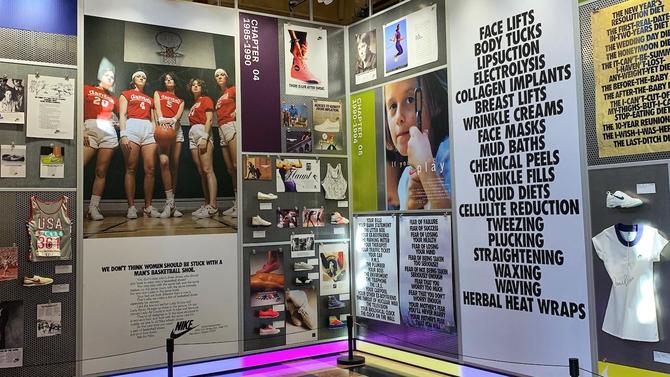
As they spoke on the issue from Paris this week, Morgan and Rapinoe told CBS News that they don't feel like the USSF has given the women's team equal marketing and attention in order to capitalize on their revenue.
"I think there's no question," Morgan said. "That's one of the cases that we have in our fight, and that's a very important thing moving forward. And I don't think that's only us -- I think that's women's sports all around."
As the American women prepare to head into the 2019 World Cup as reigning champs with a solid shot to repeat for the first time in their already-storied history, they may have a little extra leverage when it comes to negotiations. There will undoubtedly be plenty of eyes on the national team (and their legal battle) over the coming months as they reach peak visibility on their competitive calendar.
In any case, the lawsuit only helped to amplify Nike's efforts in Paris and showcase how important it is for female athletes to receive these legitimate opportunities to shine both on and off the field, pitch, ice, etc. If the showcase was a look into how women's sports are treated moving forward, that future looks pretty bright and spectacular.






